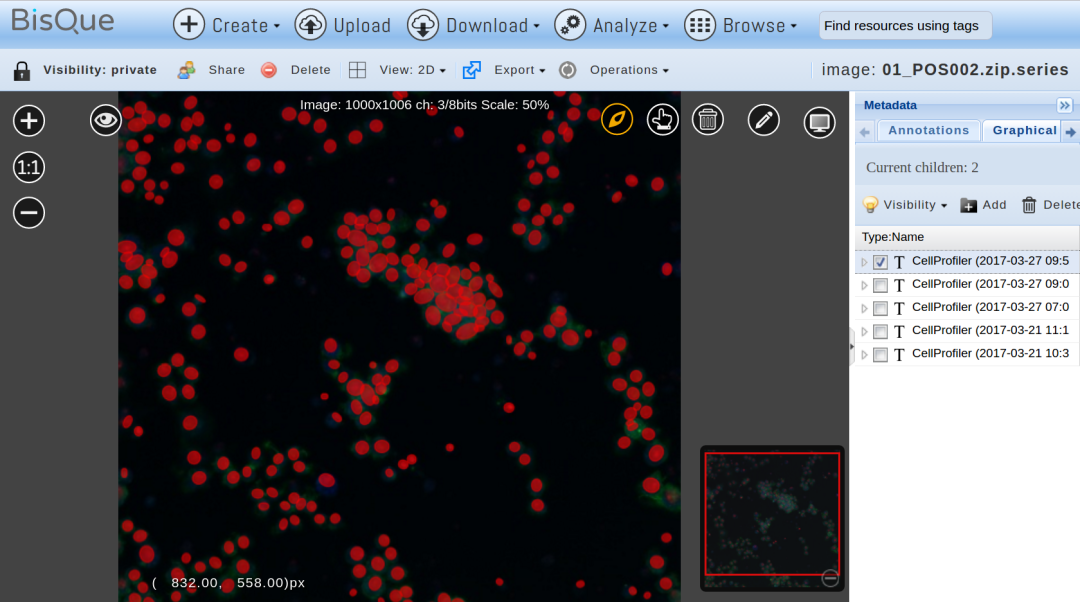
#CELLPROFILER INTENSITY SEGMENTATION MANUAL#
This type of manual work is a very tedious job, but most reliable alternative so far. For such problems, most biological studies involving SR microscopy techniques rely on manually defining regions of interests (ROIs) with geometry that best fits structures investigated e.g., ellipse, circular, square or rectangular. Automated algorithms that rely on adaptive densities information to segment and interpolate boundaries have been only shown to work well with SMLM on reference structures with continuous densities e.g., mitochondria, microtubule, however computational performance and accuracy on structures with intermittent densities and profiles remains lacking e.g., nuclear pores complex. Image segmentation algorithms that use shape or intensity data will identify single super resolved clusters, but will not perceive a group of separate clusters as one functionally active domain. Automated grouping of molecule clusters into biologically meaningful objects by direct segmentation remains largely difficult however, density algorithms optimized for Single Molecule Localization Microscopy (SMLM) was the first automated attempt to segment and interpolate object boundaries directly from SMLM images by using local adaptive density kernels to merge and separate molecules clusters into meaningful objects. Current image analysis of SR microscopy data rely mostly on complex analytical tools and MatLab ( based routines. SR microscopy visualizing single molecules clusters at nanometer resolution has made image analysis a more complicated practice. Super resolution (SR) microscopy unlocked new opportunities for cell biologists to investigate cells and cellular functions at unprecedented resolution up to few nanometers, which require re-thinking of biologists about new and previous discoveries. Our pipeline and novel segmentation procedure may benefit end-users of SR microscopy to analyze their images and extract biologically significant quantitative data about them in user-friendly and fully-automated settings. Test results confirmed accuracy and robustness of the method even in noisy STED images of gp210.


#CELLPROFILER INTENSITY SEGMENTATION SOFTWARE#
Here, we introduce a novel automated imaging analysis routine, based on Gaussian, followed by a segmentation procedure using CellProfiler software ( We tested this method and succeeded to segment individual nuclear pore complexes stained with gp210 and pan-FG proteins and captured by two-color STED microscopy. Direct and automated segmentation of SR images remains largely unsolved, especially when it comes to providing meaningful biological interpretations. This breakthrough in spatial resolution made image analysis a challenging procedure. Super resolution (SR) microscopy enabled cell biologists to visualize subcellular details up to 20 nm in resolution.


 0 kommentar(er)
0 kommentar(er)
